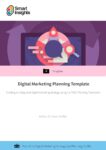Three ways that marketers can benefit from working with Spotify
When marketers talk about ‘content’ one often thinks of words, images, video, or a combination of all three, such as infographics or interactive visuals. However, in recent years there has been a surge of interest in audio, from the growing popularity in podcasting to the emergence of smart devices.
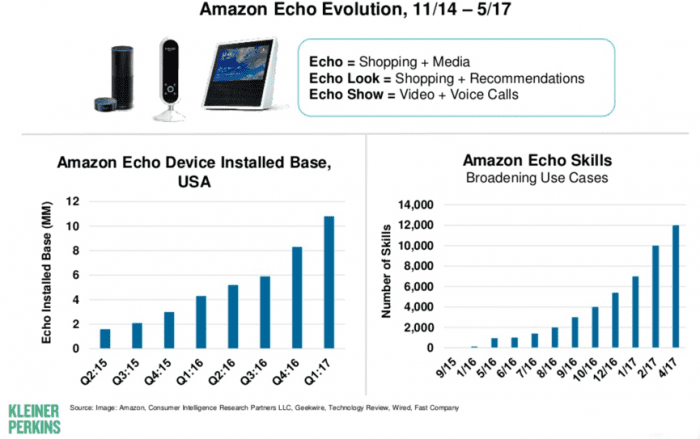
The growth of music streaming, in particular, has been a dominant trend across the globe, radically changing people’s relationship and consumption patterns with music. These changes have revealed many interesting insights and have opened up new opportunities for marketers to reach new and existing consumers within an audio environment.
Download FREE Resource – Digital marketing plan template
Our popular marketing planning template built on the Smart Insights RACE planning system.
Access the Digital marketing plan template
Spotify and the emergence of audio platforms
Spotify, Apple Music, Amazon, and Tidal are leading the music streaming revolution, however, Spotify is the clear market leader with an estimated 36% subscriber market share. They are also the only provider whose business model is designed to make streaming commercially viable (other providers have giant parent companies that use streaming as an add-on service).
Spotify has really shaped the music landscape over the last ten years and has been making headlines recently with their initial public offering (IPO) on the New York Stock Exchange. Spotify’s IPO was backed up by some very impressive statistics:
- 157 million active users worldwide
- 71 million premium subscribers worldwide
- The average customer spends 25 hours a month streaming music
- Two billion playlists from a library of more than 35 million songs across the globe
- 58 million monthly active users within Europe, accounting for 37% of its total audience, with a 59% share in the UK
For the UK in particular, Spotify has reported steady year-on-year growth of 29% (22% on mobile) and over 15 million users (10 million on mobile). It’s interesting to note the audience growth versus other platforms:
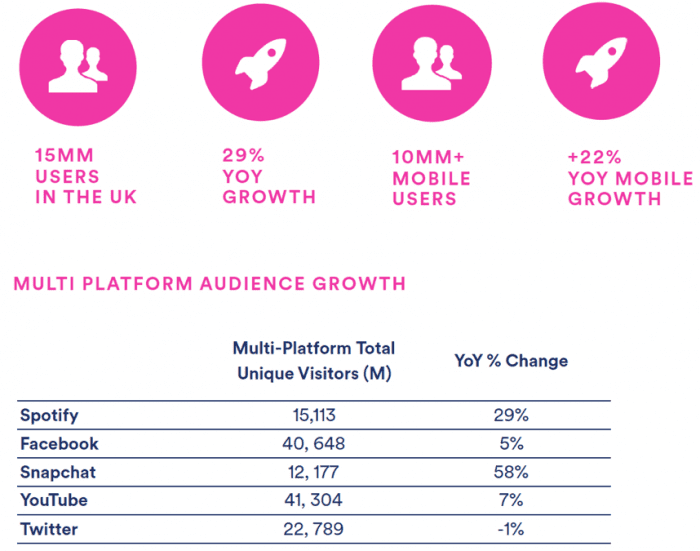
One of the major keys to Spotify’s success has been the shift from ownership to access, a phenomenon that can also been seen in the wider sharing economy and beyond, for example Airbnb (versus hotels), Uber (versus traditional taxis), Funding Circle (versus banks) and Netflix (versus TV/ cinema/ traditional DVD rentals).
In terms of weekly reach, Spotify is arguably the third largest commercial ‘radio station’ in the UK behind Heart (30%) and Capital (32%) within the 18-34 segment, and an indication of the platform’s growing popularity across multiple devices:
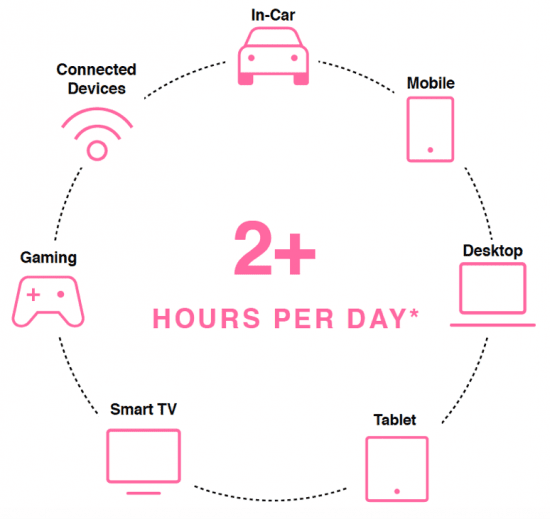
Spotify’s business model is divided into two:
- Premium subscriptions – accounted for 90% of total revenue in 2017
- Advertising – despite being a much smaller area of the business, this grew by 41% since 2016 and is seen as a future area of growth and opportunity (there are 90 million ad-supported users, typically aged between 18 to 34).
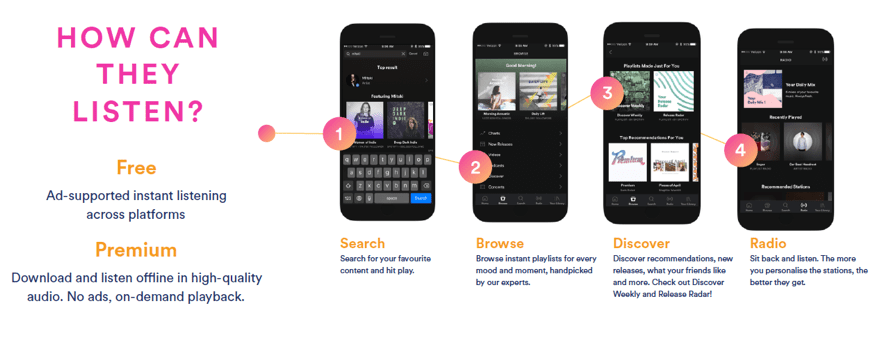 Three key areas of interest for marketers
Three key areas of interest for marketers
Spotify is a unique channel that advertisers can use to reach their target audiences. There are a few specific areas that set Spotify apart from other platforms and provide new opportunities for marketers:
1. Take advantage of unique data opportunities
The unique first-party data Spotify has collected means that advertisers can take advantage of some very unique opportunities. In contrast to some of the travails Facebook has been experiencing recently, the data Spotify collects is based entirely on logged in users and can only be used for media on the platform itself. Spotify claims to be very protective of its 157 million active users’ data in order to protect the integrity of the streaming intelligence it gathers on moods, preferences, and listening habits that brands can leverage to build engaging campaigns.
Brands can tap into a multitude of different ‘moments’ based on activities and emotions from Spotify’s listeners:
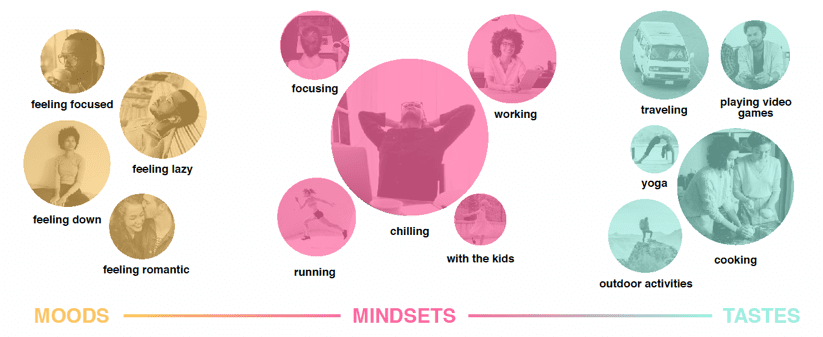
The data Spotify constantly collects on user activity, throughout the day and across multiple devices, means that over time brands can learn more about their target audiences, revealing insights about their music tastes, platform behaviors, daily activities and broader interests. Listening to music is a very personal experience and therefore this insight will enable advertisers to create personalized experiences using data that simply isn’t available on any other platform.
The unique level of data Spotify has collected was demonstrated in their own “Thanks 2016: It’s been weird” campaign, in which it harnessed both aggregated and individual data to generate very clever headlines specific to different locations. It's an example of a smart clever, engaging way to of using data to humanize technology:
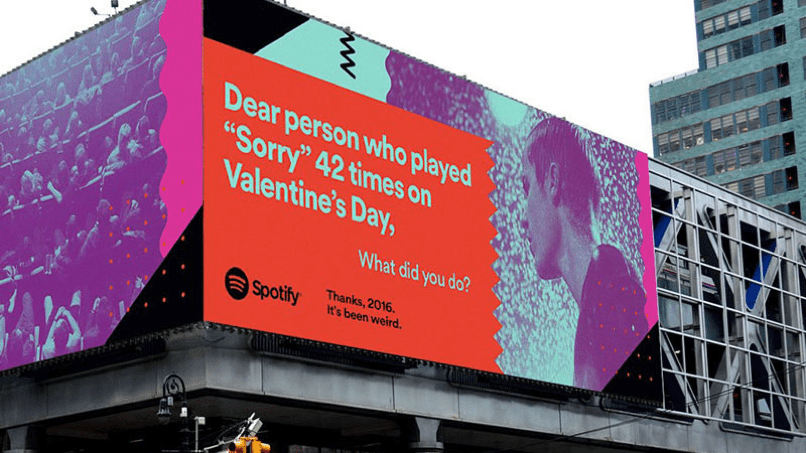
2. Reach new and diverse audience segments
The data discussed above can be used to unearth new and varied audience segments unavailable on other channels. For example, in addition to standard demographics such as age, gender, location and interests, Spotify’s streaming intelligence also allows marketers to segment by what people are listening to as well as when and how they’re listening:
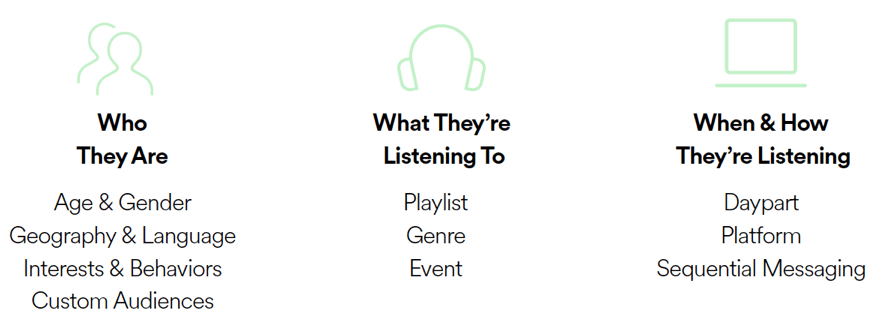
Marketers can reach demographic and interest-based audience segments, crafted by analyzing their streaming habits and music tastes:
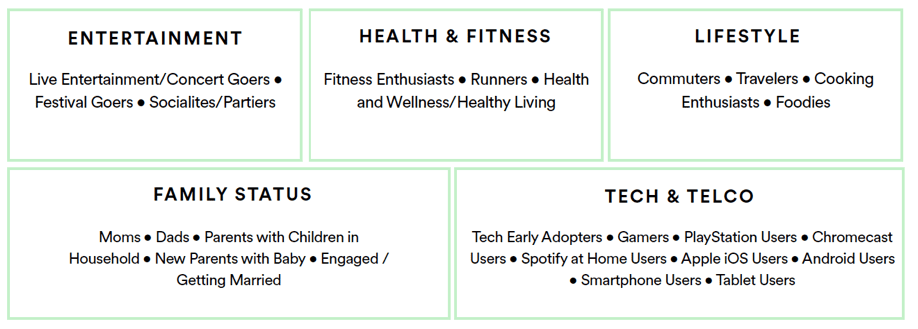
Spotify are continuing to innovate and provide new solutions to reach audiences in places where visual media is not possible. The Internet of Things and the population of screen-less devices including smart devices mean that voice will become a key operating system and there is an appetite to improve the in-car experience and deliver audio ads, verified by first-party data, which can then be used to retarget these specific audiences across devices.
Advertisers will also soon have the ability to strategically re-engage or exclude audiences reached in the past using Brand Exposure Audience segments:
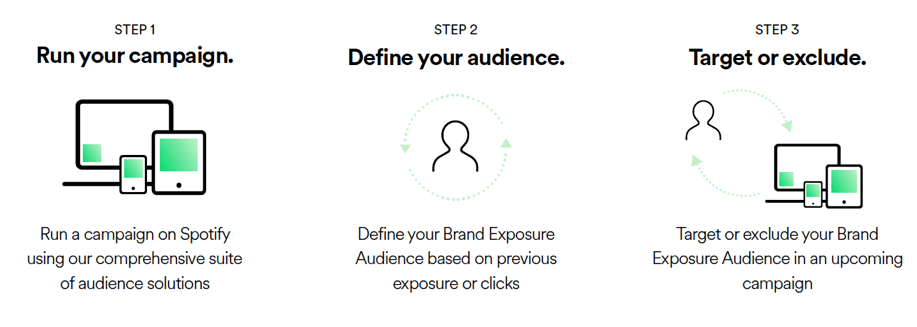
3. Encourage brands to develop their ‘sound’
As other media channels have evolved over time, many brands have seen radio only as an effective short-term sales tactic and not as a genuine brand-building medium. However, the shift from radio to audio, a rapid improvement in technology and user experience and a collaborative effort between Spotify, Acast and Global radio to invest in the future of audio mean that that advertisers should consider defining a unique ‘sound’ for their brand if they want to capitalize on these emerging marketing opportunities.
Whilst logos and theme tunes are important (something McDonald’s, Motorola and Inte, in particular,r have practiced very successfully), a brand’s sound is also about the overall tone of voice and how this is applied in the context of the music that a particular audience is consuming in the moments that matter. It’s essential to create messages that complements and not simply interrupt an experience with a sound that simply does not fit (consider a pop-themed ad in the middle of a grime playlist!).
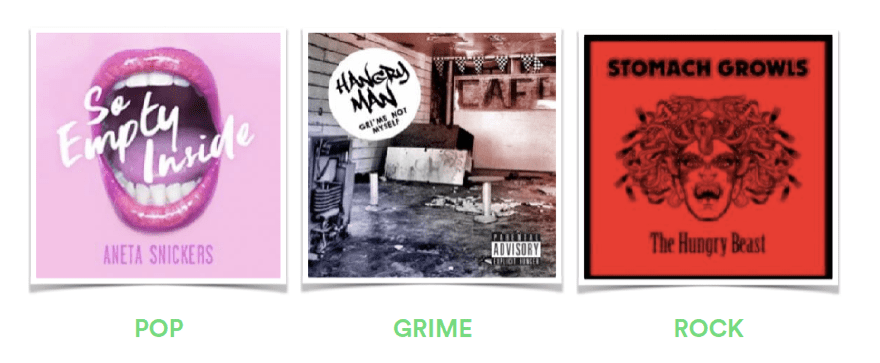
The example above is taken from Snickers’ ‘You’re not you when you’re hungry’ campaign. The brand created a series of ads in different sounds which could be integrated within different genre playlists so that they blended more seamlessly within the music.
Getting started on Spotify
There are a number of different ways to advertise on Spotify across audio, video and display, as well as custom solutions including branded and original content and exclusive partner programmes. Spotify provide a comprehensive guide, however here is a flavour of the three main areas marketers can start experimenting with:
Audio
“Reach the right people, at the right time, wherever they are”.
People use Spotify to ‘soundtrack their day’ as they move between devices and platforms and there is an opportunity to reach an audience with audio ads during these different stages:
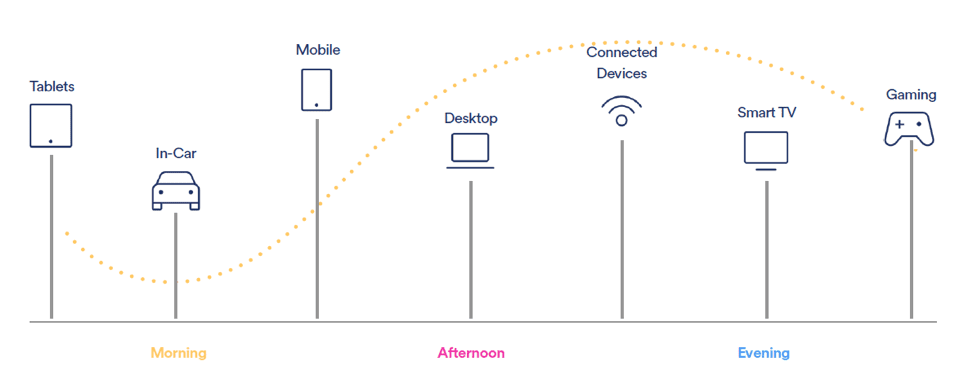
Audio ads are served between songs during active sessions, ensuring 100% share of voice. In addition to the audio ad, brands take ownership of a clickable companion display unit so that the campaign can be extended and drive traffic to a URL destination:
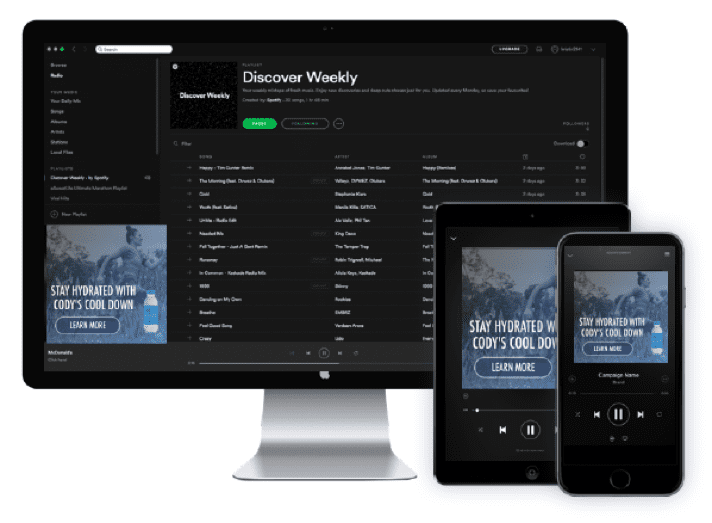
Video
In addition to sponsored sessions and video takeovers, Spotify offers ‘branded moments’ video advertising, where listeners are rewarded 30 minutes of uninterrupted listening after listening to a video message. The brand will ‘own’ the listening session and again has 100% share of voice:
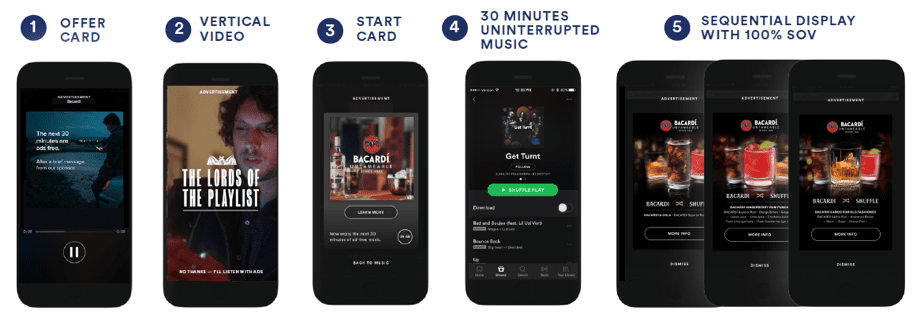
Display
Spotify’s display offering is similar to other platforms, with a range of different formats across desktop and mobile.
Brands can use homepage takeovers, welcome back overlays and leaderboard units, as well as sponsored playlists, a nice way of connecting with audiences on their favourite playlists.
Conclusion
The growth of new and innovative audio platforms, including music streaming, smart devices, podcasting and digital radio, mean that audio marketing is becoming an increasingly attractive part of the marketing mix and an opportunity for marketers to explore different ways to interact and engage with consumers.
Spotify in particular provide some really interesting opportunities, built on the back of their powerful first-party data capabilities and targeting potential. Advertisers can reach new and diverse audience segments that aren’t available via other channels and create compelling audio content to reach listeners in a very personalised context - ads can be tailored to specific listeners’ music tastes and served between songs to ensure 100% share of voice.
We’re currently in a really interesting period of time when brands may be prompted to revaluate not only their look and feel but their sound, too. We often overlook audio branding and the potential of sound when we think about ‘content’ but this could be about to change.



